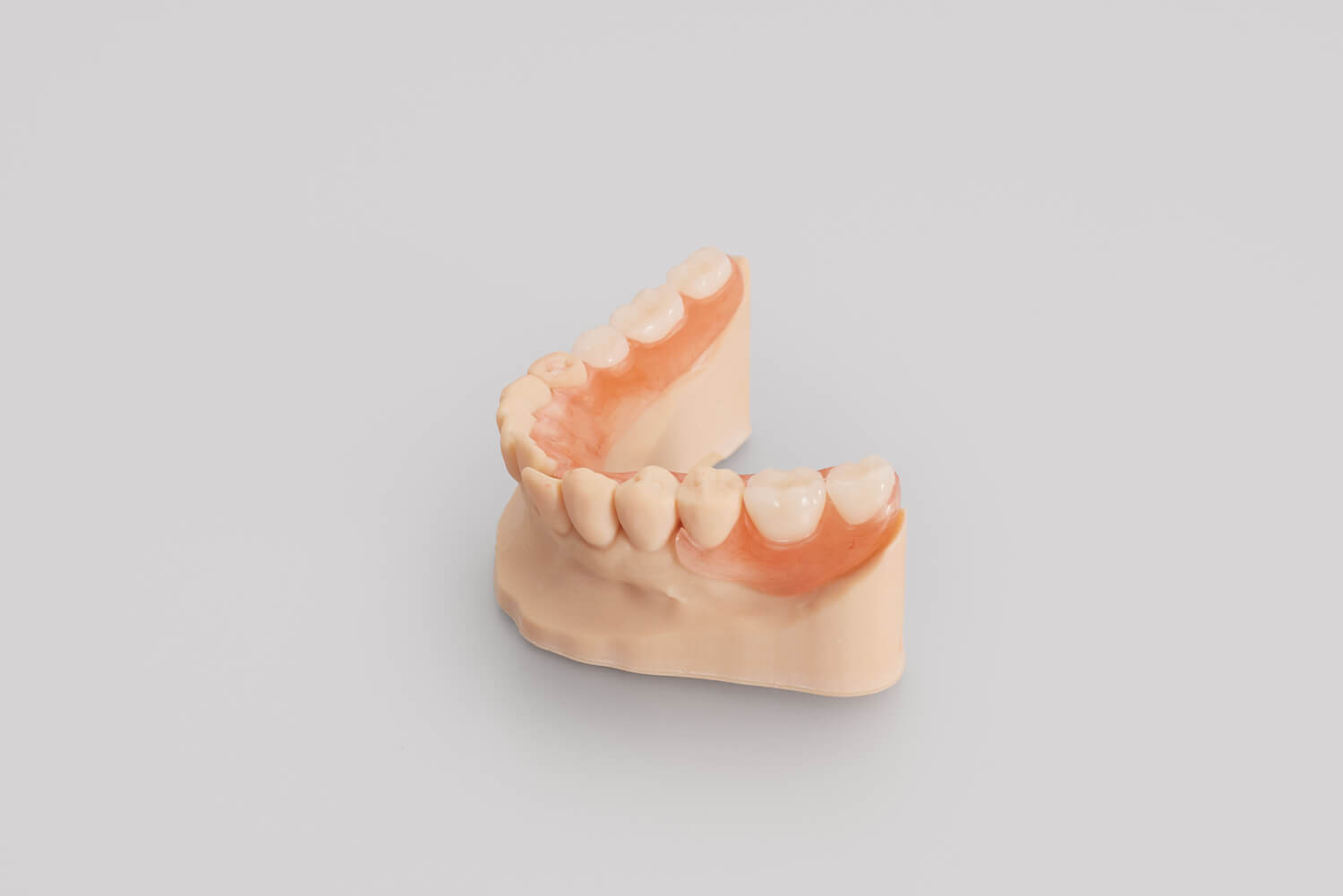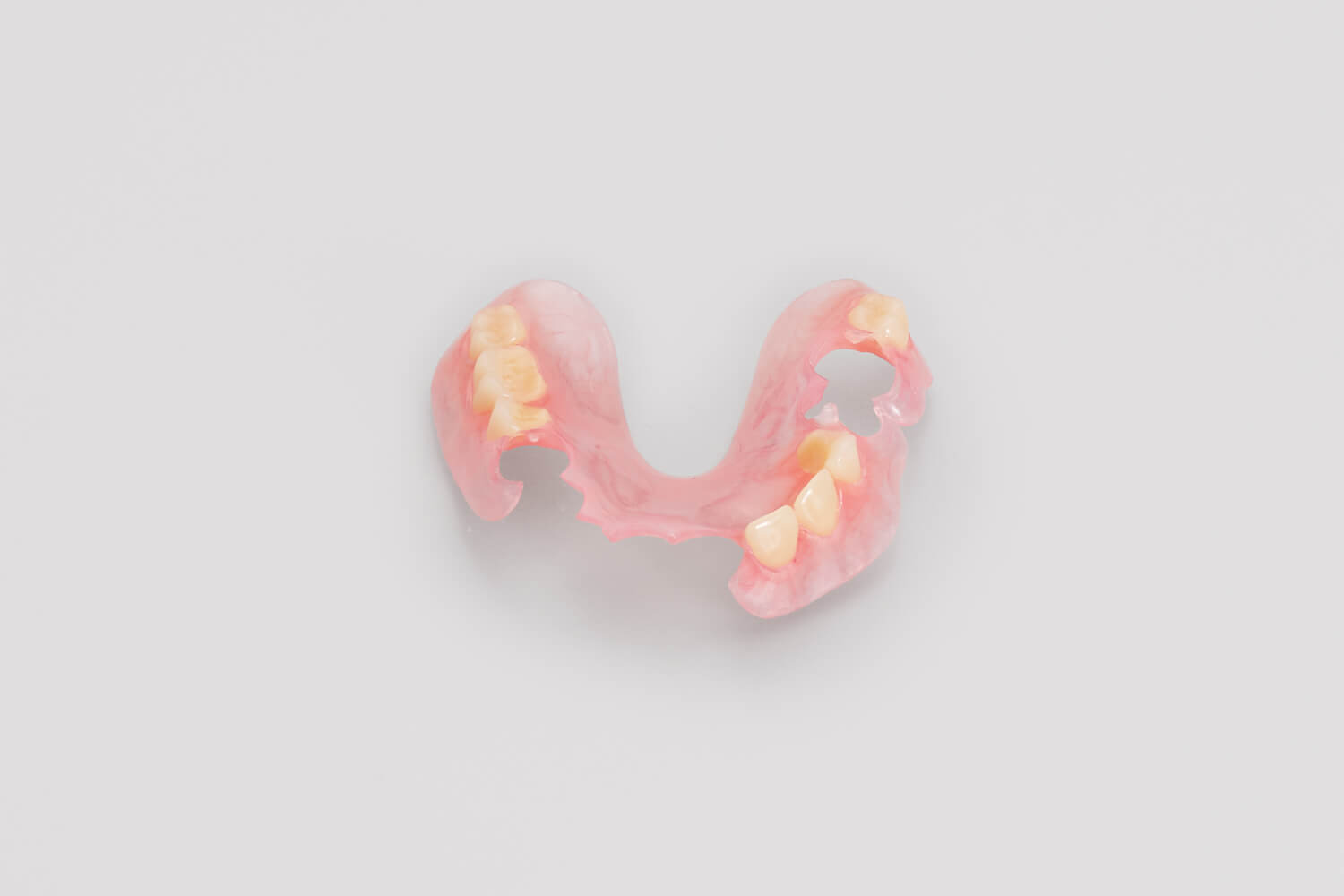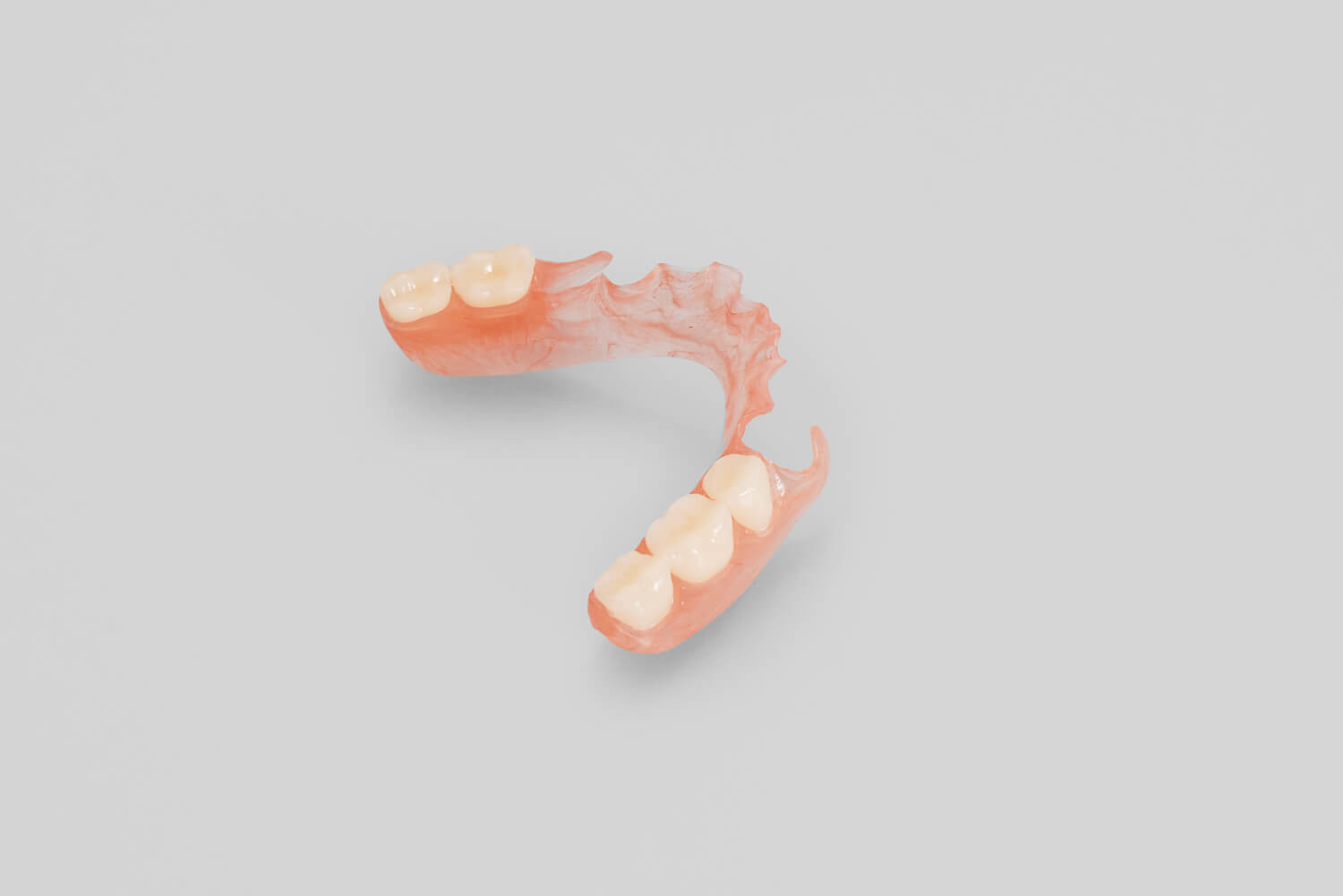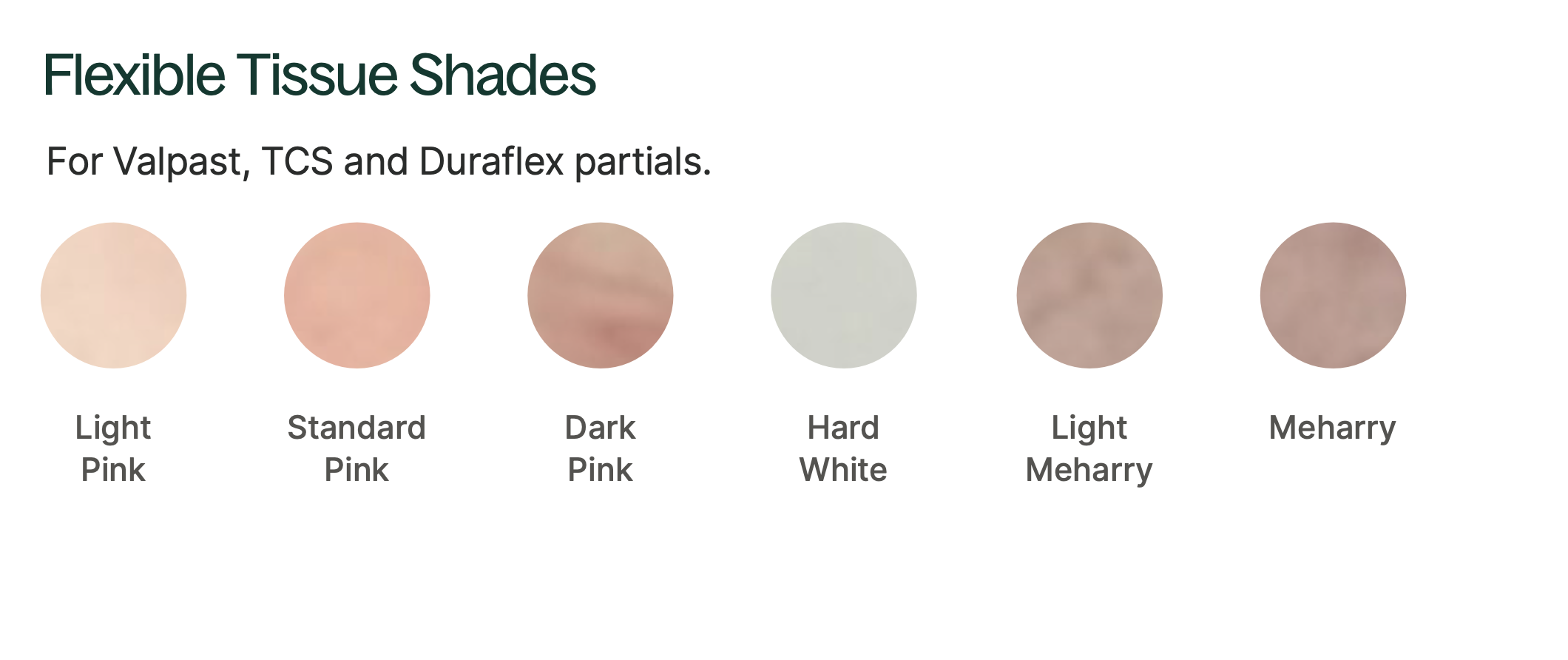Flexible partial dentures
Flexible partial dentures are a type of removable dental prosthetic device used to replace one or more missing teeth. They are made of a flexible thermoplastic material that conforms to the shape of your patient’s mouth. Dandy partials are custom-made to fit the mouth and are designed to be as comfortable and unobtrusive as possible.

Take some time to learn more about taking your practice digital with the nations first and only digital dental lab.
Explore Flexible Partial Dentures
Indications for use
Flexible partial dentures are used to replace missing teeth and provide support to the remaining natural teeth.

Contraindication
Flexible partial dentures should not be used by patients who have a significant amount of missing teeth, as they may not provide adequate support. Additionally, they may not be suitable for patients with certain medical conditions, such as severe gum disease or bone loss.

Potential risks & benefits of flex partial dentures
Advise Patients of the Following:
Patients should follow your instructions carefully when wearing and caring for their flexible partial dentures. Failure to follow proper care and maintenance procedures can lead to damage or decreased effectiveness.
Flexible partial dentures can sometimes be impossible to replace and the life expectancy for this type of appliance is less than that of a metal partial denture. Please instruct your patient to never boil their flexible partial denture to keep the appliance usable.
Dandy flex partial material options
Thermoflex is milled from an acetal puck, making them one of the few materials for partial dentures that can be milled digitally. Acetal resin partial dentures have flexible properties and are “tooth” colored meaning the clasps can blend in with a patient’s teeth.
TCS is a thermoplastic nylon that can be heated and remolded to adjust. Thermoplastics can resist staining and odors and contain no BPAs—therefore are considered the most biocompatible material. Thermoplastics allow you to do chairside adjustments and has the most composite makeup than any other partial denture material. TCS has the most composite material of all the flexible partial denture materials Dandy offers.
Valplast is a thermoplastic nylon resin material, however it cannot be heated and remolded to adjust. It was the first flexible partial denture material introduced to the market and is seen as industry standard. Valplast has less composite material than TCS, but has more than duraflex.
Duraflex is an ethylene propylene material that’s best used for aesthetic cases requiring opaque orange hues. It has the least amount of composite material, but the most vinyl of all flexible partial denture material options.
Valplast vs Duraflex
Valplast
Flexible partial dentures made with Valplast offer a comfortable fit and natural-looking aesthetics, while being highly flexible
and resistant to breakage. Valplast, however will have a higher propensity of breakage only because of the composite in the appliance.
Duraflex
Duraflex partials provide exceptional durability and flexibility, ensuring a comfortable fit and allowing for easy adjustment. Their stain resistant and non-allergenic properties offer long-term satisfaction and peace of mind for patients.
Duraflex has the largest ratio of vinyl to composite material making it the most durable flexible partial denture material Dandy offers.
Shade options for flexible partial dentures

Directions for Use
Seating a flexible partial denture in the mouth can be done using the following steps:
- Ensure that the partial denture is clean and free of any debris.
- Rinse the appliance and patient’s mouth with warm water before inserting the partial denture.
- Gently place the partial denture in the mouth and use your fingers to guide it into place.
- Avoid using excessive force or pushing the partial denture too far.
- Gently bite down on the partial denture to ensure proper fit and stability.
- Be sure to instruct your patient on how to wear their new flexible partial denture, including specific instructions on how long to wear it each day and when to remove it.
Please note that in order to make any chairside adjustments on flexible partial dentures, you need a special type of bur. We suggest that if any major adjustments need to be made to your flexible partial denture, you send it back to us as we are equipped with all the necessary equipment to make the adjustments on your behalf.
Looking for a dental lab to make flexible partials?
Look no further than Dandy! Reach out to our team for more information on pricing, turnaround times, and customizing your orders.
Take some time to learn more about taking your practice digital with the nations first and only digital dental lab.